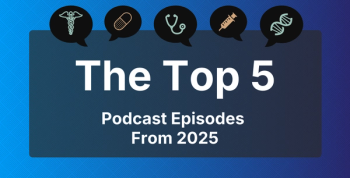
Workers With Excessive Daytime Sleepiness, OSA at Higher Risk of Occupational Accidents
Employees with either obstructive sleep apnea or excessive daytime sleepiness were shown to be 2 times more likely to be involved in occupational incidents, highlighting the serious safety hazard posed by both conditions.
Employees with either obstructive sleep apnea (OSA) or excessive daytime sleepiness (EDS) were shown to be 2 times more likely to be involved in occupational incidents, highlighting the serious safety hazard posed by both conditions.
Published in The International Journal of Occupational and Environmental Medicine, study authors note that globally, 1000 people are estimated to die each day from occupational accidents. To assess the safety performance of employees, employers can utilize reactive and proactive methods, in which reactive or lagging methods evaluate occupational incidents using past data and proactive or leading methods measure employees' behavior in the workplace.
Researchers indicate that while there has been previous research on the relationship between sleep disorders and occupational incidents, there is insufficient data on the effect of OSA and EDS on employee safety performance. Study authors sought to examine the simultaneous effect of sleep disorders through the scope of both proactive and reactive data measurements of safety performances, a link that has never been examined prior.
The cross-sectional study included 661 employees (mean age = 34.7 years; 95% male) working in the operational and executive sections of an oil construction company in Iran. EDS was analyzed in the study cohort by the
Predictor and demographic variables were determined with hierarchical multiple linear regression.
In the symptom screening, more than 27% of workers exhibited abnormal drowsiness (score > 10) in the ESS scores and 37.2% of those in the STOP-BANG screen had symptoms associated with OSA (score ≥ 3). For those experiencing EDS symptoms, they had a lower safety behavior score and were more commonly associated with occupational accidents and near misses.
Additionally, the STOP-BANG and ESS scores showed significant negative correlations with variables safety compliance (β = 0.228, β = 0.370), safety participation (β = 0.210, β = 0.144), and total score of safety behavior (β = 0.332, β = 0.213). Based on reports of occupational incidents in relation with both variables of sleep disorder, workers with EDS were 2.5 times more likely and those with OSA were 2 times more likely to be involved compared with workers who did not have these conditions.
Researchers stressed that as EDS serves as a significant hazard in workplaces, improving sleep hygiene through education could prove crucial in preventing workplace accidents, injuries, and near-misses. “In addition, better monitoring of sleep hygiene in periodical medical examination of workers, and reviewing systems of allocating breaks, and opportunities for restorative rest during such breaks, are management procedures that will contribute to improving the safety performance in all safety critical work,” said the study authors.
Reference
Gharibi V, Mokarami H, Cousins R, et al. Excessive daytime sleepiness and safety performance: comparing proactive and reactive approaches. Int J Occup Environ Med. 2020;11:95-107. doi: 10.34172/ijoem.2020.1872.
Newsletter
Stay ahead of policy, cost, and value—subscribe to AJMC for expert insights at the intersection of clinical care and health economics.








































